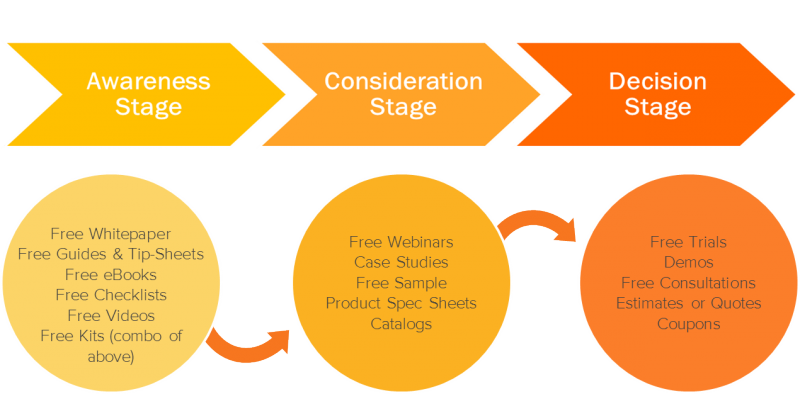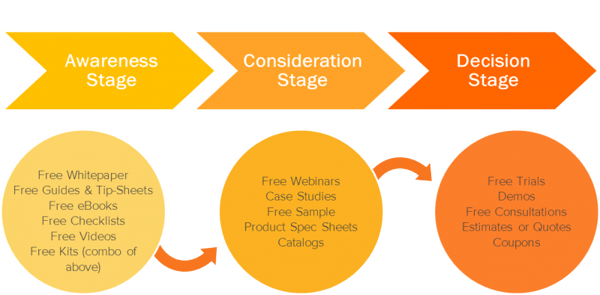54% of client-facing marketers believe that IT bottlenecks are a major pain point. The struggle is real for both agency employees and corporate marketers worldwide. Waiting for technology teams to deliver websites and other key marketing technologies can cause content marketing strategies and lead generation goals to grind to a halt. In some cases, this waiting period can last months. Or even years.
If your brand needs to drastically update your internet presence and increase your lead generation, waiting on a new website to be delivered might not be your only choice. Opting for growth-driven design (GDD) is a powerful tool for marketing teams to focus on inbound and website efforts simultaneously. If you're one of the 63% of marketers spending more on a data-driven approach this year, GDD offers the unique benefit of being a truly metrics-driven approach to digital marketing and web improvements.
How Growth Driven Design Benefits Inbound Marketing
Instead of having to wait for a website to launch before you begin creating targeted campaigns, you're able to focus your efforts (and budget) on content and web improvements simultaneously. Updates to your website each month aren't just a blind hypothesis; they're driven by your increased knowledge of your buyer's journey.
Lean marketing dictates a continual improvement-focused mindset, and the powerful combination of GDD and inbound allows you to shape your marketing strategy based on your prospect's behavior.
In this blog, we'll explore several of the many ways that GDD doesn't just peacefully coexist with inbound marketing. It can improve your efforts to generate and nurture qualified leads. Join us as we review some benefits of this approach.
For more insights on this unique approach to website improvements, check out 5 Game-Changing Benefits of Growth Driven Design.
1. Improved Buyer's Journey
How well do you understand the journey your customers take from awareness to purchase decision? Research shows that at least 57% of the buyer's journey is completed before your prospects engage with your sales team. Your website pages, content offers, and lead nurturing workflows are responsible for ushering buyer's from awareness to consideration, and likely into the beginning stages of comparison:

image credit: HubSpot
Many brands who struggle to generate enough website traffic and leads don't have a comprehensive understanding of their buyer's journey. And that's completely okay. As you work through monthly improvements on your website in a GDD approach, you can rely on your website metrics to understand the conversion pathways that are turning website visitors into customers. This reliance on closed-loop metrics and other types of marketing analytics will help you understand "sticking points" in your buyer's journey; allowing you to remove friction.
By putting efforts into both GDD and inbound marketing, you can better understand your buyer's journey. This allows you to refine your content, lead nurturing, and website's conversion pathways.
2. Improved Conversion Gateways
60% of marketers believe that buyer's journey analysis is critical to improving their conversion rates. If your current marketing and website technologies don't support A/B testing and other forms of data-driven optimization, your lead generation efforts may feel like a shot in the dark.
Improving your landing pages, thank you pages, calls-to-action (CTAs) and other conversion gateways on your website is an important part of GDD. Brands can take an agile stance when it comes to implementing new forms of CTAs and landing page design, to determine the most statistically effective forms of conversion gateways before implementing these changes site-wide.
Perhaps best of all, GDD isn't a short-term fix. This is incredibly optimal for many companies, considering the fast-changing preferences of today's consumers. By continually testing, implementing changes, and re-testing your conversion gateways, you can continue to optimize for your ideal customers' needs.
3. Fixing Bottlenecks
Imagine the following scenario. A marketing manager realizes that the CTA on her website's homepage is completely ineffective. Her first-time website visitors aren't ready to talk to sales, so they're unlikely to click on a "schedule a free consultation" button. They prefer lower-commitment forms of content, such as their free eBook. Unfortunately, this marketing manager is unable to update the CTA until next year based on IT budget restrictions.
That nightmare scenario is a reality for many brands who engage in traditional web design methods. If your content management system is inflexible, and you opt for a full site overhaul, you could be stuck with problems until your site is rebuilt again in several years.
Websites are essentially a hypothesis when they're initially launched, even for well-established brands with a fantastic backlog of marketing metrics. It's only natural that you'll discover bottlenecks and issues in the months following a website launch. Growth-driven design allows marketers to quickly implement changes to fix these sticking points, so they're not stuck with barriers to prospect conversion for months or year at a time.
4. Smart Content
Amazon and Netflix may have popularized the concept of personalized content recommendations, but this application isn't just for huge companies anymore. The technology required to offer "smart content" recommendations to buyers is now widely available and affordable, thanks in part to HubSpot and other marketing technology vendors.
If your brand implements GDD, you can continually work to apply and refine your smart content offerings based on your marketing metrics. By observing the landing pages, CTAs, and other materials that your ideal customers engage with before becoming buyers, you'll develop a deeper understanding of your buyer's journey from an informational perspective.
With GDD, it's not just possible to implement smart content resources. It's possible to implement this approach, test and refine on an ongoing basis. You can add resources as your marketing team develops new eBooks, tip sheets, comparison guides, and other high-value offers. Smart content is called "dynamic" for a reason, and GDD allows you to continually improve what you're offering to leads and repeat website visitors.
5. Agility
GDD and inbound marketing are an unbelievably powerful duo. The approach of monthly, prioritized website and inbound marketing improvements allows brands an unprecedented degree of agility. Entrepreneurs are all familiar with the unofficial motto of the Silicon Valley tech crowd; "fail fast." It's a credo that describes a culture of taking small risks, measuring the results, and either implementing the changes or abandoning the expert.
"Failing fast" can facilitate a culture of continual innovation, which can lead to unprecedented levels of excellence. For many brands, however, this concept just isn't possible. However, with the GDD and inbound approach, your company can reestablish priorities and goals on a monthly basis. Perhaps you'll find that your latest marketing campaign was such a wild success that you implement related website changes on a large-scale. Maybe your newest landing page yields mediocre lead conversion results, and you'd prefer to optimize it.
Regardless, GDD and inbound ensure that you're not stuck with failure for months or years on end. It also facilitates a continual reevaluation of priorities, so you can continually propel your company towards website and marketing excellence. GDD moves fast, so you can innovate to win very quickly.
Growth Driven Design Fuels Inbound Marketing
Both growth-driven design and inbound marketing are relatively new concepts in the business realm. However, they're increasingly popular means for brands to connect with fast-changing, technology-focused consumers. By focusing simultaneously on technology and marketing, you can apply data insights in real-time and never stop improving.
Jasmine W. Gordon is a copywriter at Lean Labs. She's written for digital audiences for over 5 years, and her background includes agencies, tech startups, health care, big data analytics, energy, and more. Jasmine loves new marketing statistics, optimization studies, and live music.





